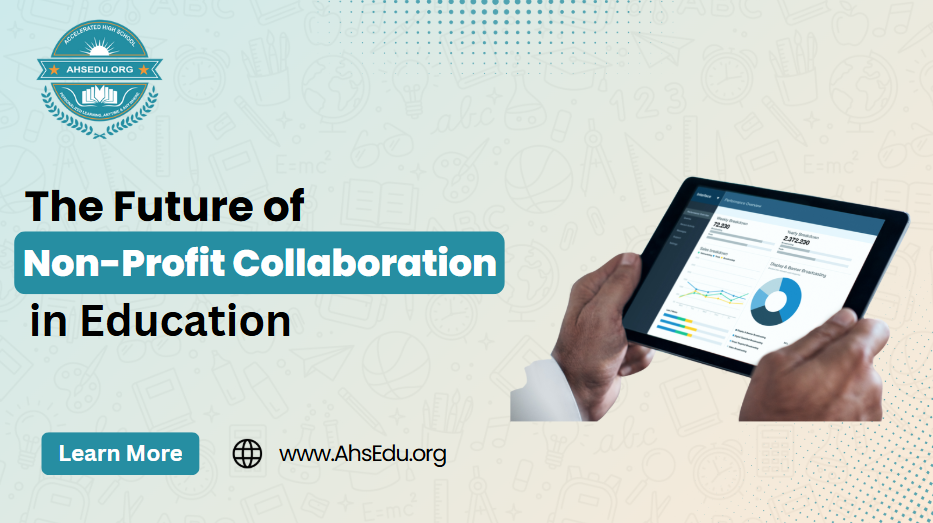Introduction
Non-profits have long played a pivotal role in addressing educational inequities, bridging gaps that governments and private institutions often overlook. As the global education landscape evolves, the collaboration between nonprofits and other stakeholders is becoming increasingly vital. By leveraging innovative technologies, forming strategic partnerships, and addressing systemic challenges, non-profits are shaping the future of education. This article explores how non-profit collaboration is transforming education and what lies ahead.
The Current State of Non-Profit Involvement in Education
- Addressing Access and Equity
- Non-profits work tirelessly to ensure marginalized communities have access to quality education. Organizations like UNICEF and Teach for All focus on delivering resources to underprivileged students, closing the equity gap.
- Innovative Educational Models
- Non-profits often serve as incubators for innovative educational models. For example, Khan Academy’s free online resources have revolutionized how students and educators approach learning.
- Community Engagement
- Many non-profits prioritize community involvement, recognizing that education thrives in supportive ecosystems. This includes collaborating with parents, local leaders, and other community stakeholders.
The Role of Technology in Non-Profit Collaboration
- Expanding Digital Access
- With the rise of e-learning platforms, non-profits are using technology to reach remote areas. Initiatives like AHSEdu provide digital learning tools aligned with standardized curriculums, enabling students in underserved regions to access quality education.
- Data-Driven Insights
- Modern non-profits use data analytics to measure program effectiveness. These insights help tailor interventions and allocate resources more efficiently.
- Collaborative Platforms
- Digital platforms facilitate collaboration among non-profits, schools, and donors. Tools like Slack and Microsoft Teams are being adapted for large-scale educational projects, enhancing coordination and impact.
Key Areas of Collaboration
- Public-Private Partnerships
- Governments and private entities often collaborate with non-profits to scale educational initiatives. For instance, partnerships between non-profits and tech giants like Google have enabled wider access to digital literacy programs.
- Teacher Training and Development
- Non-profits often focus on empowering educators. By providing training resources, they help teachers adapt to modern methodologies and technologies.
- Inclusive Education
- Collaboration is essential in creating inclusive educational environments. Non-profits like Special Olympics International advocate for students with disabilities, ensuring their unique needs are met.
Challenges in Non-Profit Collaboration
- Sustainable Funding
- Securing consistent funding remains a significant hurdle. Many non-profits rely on donations and grants, which can fluctuate.
- Coordination Among Stakeholders
- Effective collaboration requires seamless communication between governments, private companies, and non-profits. Misaligned goals or bureaucratic red tape can hinder progress.
- Scalability of Initiatives
- Scaling successful programs to larger populations often presents logistical and financial challenges. Technology and strategic planning are crucial in overcoming these barriers.
The Future of Non-Profit Collaboration in Education
- Integration of Artificial Intelligence
- AI is poised to transform how non-profits deliver educational content. Personalized learning algorithms can adapt to individual student needs, providing a tailored educational experience.
- Global Networks and Knowledge Sharing
- Non-profits are increasingly forming global coalitions to share best practices and resources. This collaborative approach ensures more equitable distribution of educational opportunities.
- Focus on Lifelong Learning
- The concept of education is expanding beyond traditional K-12 systems. Non-profits are beginning to focus on lifelong learning, offering programs that cater to adults seeking to upskill or reskill.
- Increased Community-Centric Models
- The future will see a stronger emphasis on community-driven initiatives, where non-profits work hand-in-hand with local leaders to design programs that reflect cultural and regional needs.
Case Studies: Success Stories in Non-Profit Collaboration
- Room to Read
- This non-profit has partnered with local governments and communities in developing countries to improve literacy and gender equality in education. Their collaborative model has benefited millions of children.
- Partnership for Education
- In Ghana, USAID’s collaboration with non-profits has resulted in improved reading skills for primary school students. This initiative highlights the power of public-private partnerships.
- The Luminos Fund
- Focused on providing accelerated learning programs for out-of-school children, the Luminos Fund works with non-profits and governments to reintegrate students into mainstream education.
Empower the next generation of learners, and join AHSedu.org’s mission to bring innovative education to every child. Sign up at https://ahsedu.org/non-profit-form & Become a partner with us.


